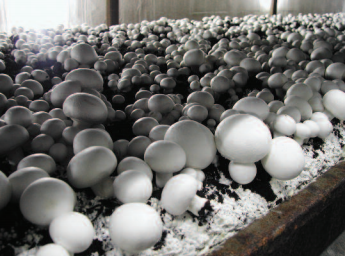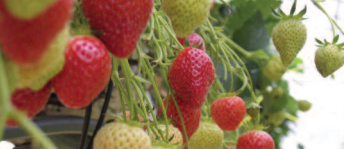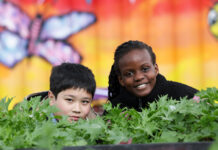

Market and policy issues
The horticultural sector contributes close on €350m (Source: Department of Agriculture, Food and the Marine (DAFM), 2015) to agricultural output at farm gate level and provides over 6,000 jobs in the production sector and a further 9,000 in the amenity services sector. The market challenges can be summarised as a general cost v price squeeze. In the context of Ireland as a high-cost economy, technology adoption will be the key focus to maintain and grow the value of the sector.
Most sub-sectors can be characterised as having consolidation in grower numbers where the increased size of individual operations has led to changing requirements in terms of the research and advisory agenda. Most sectors are in a growth phase currently and the opportunities for development rest with increased technology adoption and innovation. Generally, horticulture producers face the challenge of the market place on a daily basis. There are no subsidies, so profit from productivity is paramount. In the face of increasing
globalisation and competition, increasing consumer demands around sustainability and quality-assured products, growers and producers will need to constantly innovate to maintain competitiveness and viability.
The horticultural sector will exploit the development potential of the mushrooms, fruit/vegetable and nursery stock/cut foliage sectors as follows:
- by supporting innovation that creates diversity in the nursery stock/cut foliage sector;
- by making the best use of integrated pest management (IPM) in crop production to meet the increasing consumer demands around sustainability and quality-assured products; and,
- an opportunity exists to increase the sophistication and complexity of the mushroom product portfolio in the context of significant advances in mushroom science, which will expedite mushroom breeding for improved agronomic characteristics, but more importantly for a new mushroom product portfolio. An industry-driven mushroom technology centre that brings together expertise and funding from state agencies, research institutes and industry will provide a secure base to support the expansion of the mushroom sector into the future.

The Teagasc horticultural programme will focus on:
- a new collaborative mushroom research and advisory agenda to be developed with stakeholder groups;
- developing an IPM toolbox for all horticultural sub-sectors; and,
- meeting significant challenges like energy use efficiency, labour use efficiency and addressing particular cross-sector issues like peat replacement.
Shape and size of sector in 2025
- Overall increase in farm gate output to €400m.
- Continuation of consolidation, specialisation and vertical integration in the supply chain.
- Anticipated 450 sustainable profitable commercial production units
Technical performance
- Mushrooms: at the process end, harvester productivity will increase from 26kg/hour to 30kg/hour through innovation in the application of precision technology. Waste streams will become revenue streams in terms of energy use and a more sophisticated mushroom product portfolio.
- Cut foliage: continuation of the programme of screening a range of plant material to identify ‘newer’ and innovative types to continuously excite an expanding market. Expansion of the sector in area terms from 400ha to 650ha, leading to an increase in value terms from €7m-€10m.
- Vegetables: crop management and protocols will need to change to incorporate IPM strategies, in the context of reduced pesticides and new regulations.
- Fruit: adoption of protocols to improve quality in the supply of a range of crops over the maximum season. Post-harvest techniques to extend shelf life and even out supply.
- Nursery stock/ornamentals: use market intelligence (developed in concert with Bord Bia) and knowledge of the new business models which have emerged recently, to deliver actionable advice to the plant producers about their positioning within the value chain.
- Full implementation of IPM across the sector.
- Support the horticulture industry in the area of compliance management, in the context of increasing regulatory and consumer demands around sustainable and quality-assured food.
Environmental and land use implications
- Horticulture activities can have both a positive and a negative impact on the environment. Many relationships are complex (e.g., biodiversity) and poorly understood, let alone valued.
- In the context of the circular economy, horticulture is well placed to maximise waste utilisation and increase energy use efficiency.
- Environmental sustainability credentials will need to be fully verified using Origin Green.
- IPM adoption and restricted pesticide availability will reduce environmental loading.


Research and advisory actions
- Continue to revitalise Teagasc’s capacity in horticultural research, particularly in mushroom research and IPM. Focus advisory services in the nursery stock, vegetable, fruit and mushroom areas, supported by the basic services of pathology and entomology.
- Update Teagasc’s research and training facilities to commercial standards. Collaborate with food and biotech research personnel to innovate and add value to horticultural produce.
- Strengthen the provision of a fully integrated research, advisory and education programme.
Comment
The need for ongoing industry modernisation remains a key priority to attain the efficiencies required in a competitive global horticultural industry. Producing fresh produce is now a highly regulated business, where a high degree of professionalism is required to meet the demands of the knowledge driven consumer. This trend will have major implications for all growers, as well as the input and output service industries. The goal of Teagasc will be to provide the industry and growers with the knowledge and skills to implement these regulations while enabling growers and the industry to deliver increased profit from productivity.
Contact
Dermot Callaghan dermot.callaghan@teagasc.ie, or your local Teagasc adviser.
The road map for horticulture is available on www.teagasc.ie.
Source: Teagasc – Teagasc Sectoral Road Map: Horticulture








